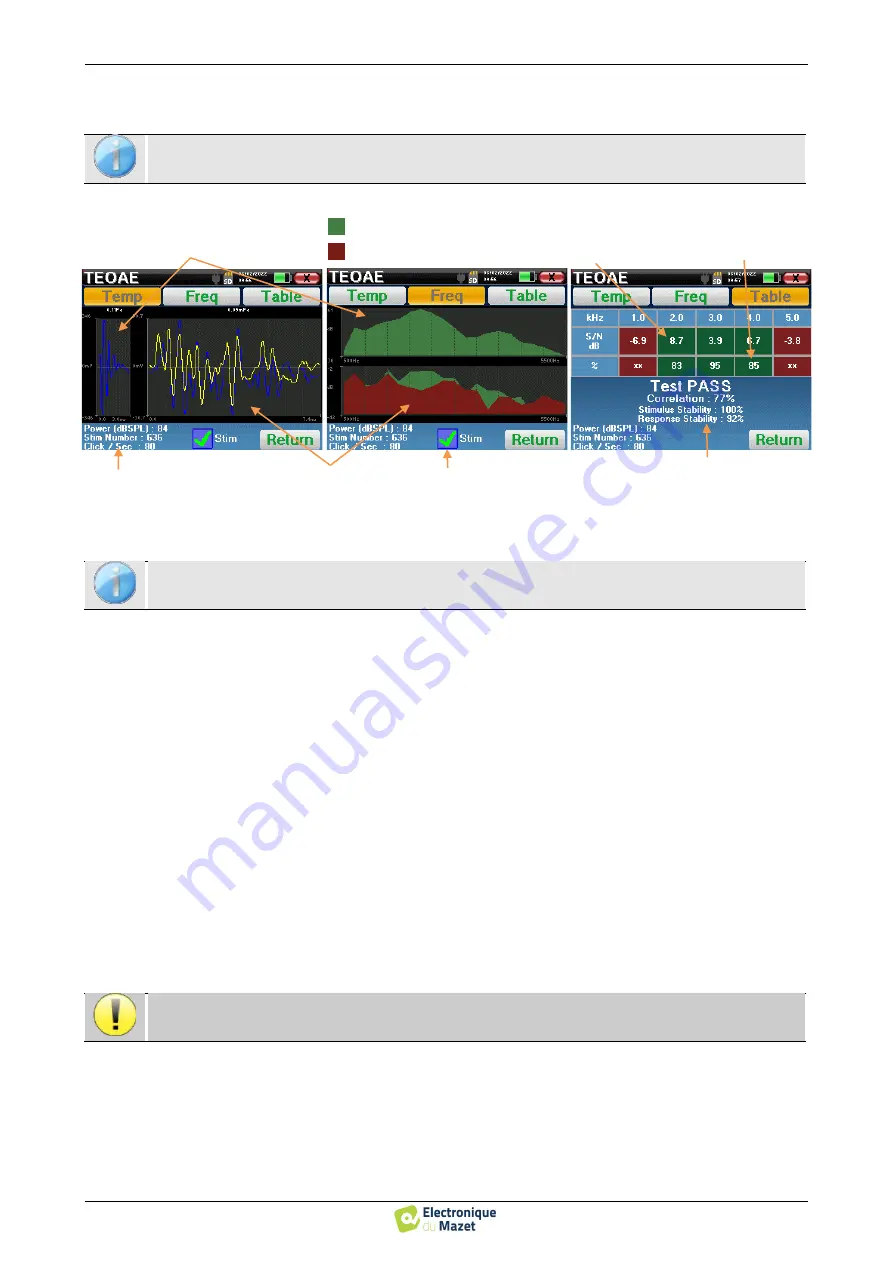
User guide
ELI
O
S
ECH001XN111-A4 – 07/2022
79
Handheld mode measurement
4.8 TEOAE
4.8.3
Measurement consultation
The
TEOAE
reading is done on three screens. Each one gives different information. (temporal, frequency, synthetic).
•
On the first screen there is the same display as during the measure, the temporal view, with the click shape on the
left and the two TEOAE curves (or buffers) on the center.Superposing the curve help to see if the TEOAE is pre-
sent and if there is a reproducibility between the curves (if they are superposing or not).
•
The second screen is the frequency view.
–
Upper graph: click spectrum. If the probe is correctly placed, the maximum click spectrum should be reach
between 2KHz and 4KHz.
–
Lower graph: Noise spectrum in red and signal spectrum in green (the signal really generated by the inter
ear). If the cochlear signal is present, the green spectrum (signal) should exceed the red one (noise).
•
The last screen summarizes in a digital manner the previous information. Namely, the ratio between the signal
and the noise as well as the reproducibility rate for each frequency.
The sheet cases become green or red to indicate that the ear correctly respond to the different frequencies.
The validation criteria are:
–
Signal noise ratio upper than 9 dB and repeatability upper than 50%
–
Signal noise ratio upper than 6 dB and repeatability upper than 60%
–
Signal noise ratio upper than 3 dB and repeatability upper than 75%
These criteria simply represent a help to the measurement reading. They don't have medico legal value.
Refer to paragraph
for more details about patient management.
Stimulus curve
Signal level (dB SPL)
Measurement infor-
mations
Noise level (dB SPL)
Signal/noise ratio for
each frequency
Repeatability between
buffer A and B for
each frequency
Response curve
Display stimulus cuve
Information about
responses quality
By default, the click data (“
stim
” check box on the bottom of the screen) are not displayed.
For physiological acoustic reasons, the reliability in frequencies of the TEOAE test is between 2Khz and
4KHz, the 1Khz and 5Khz information are only indicative.






























